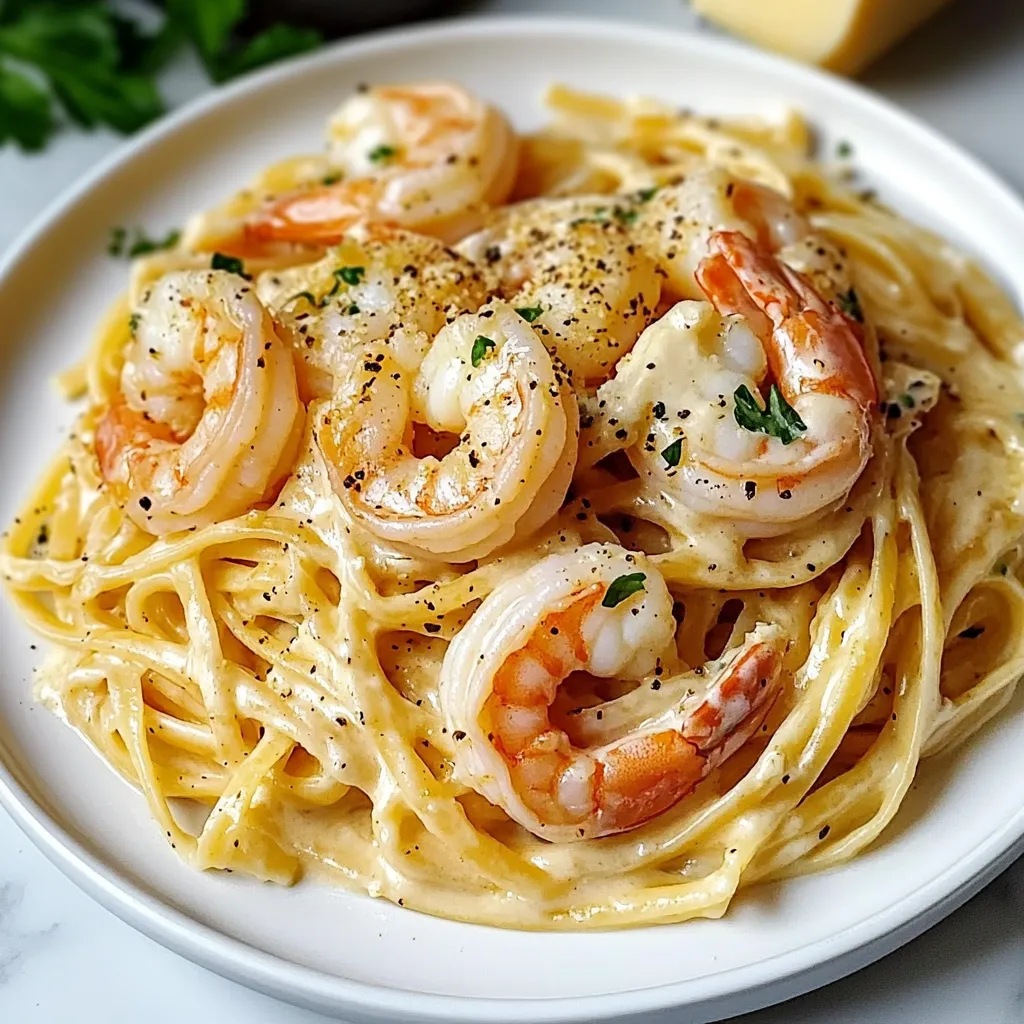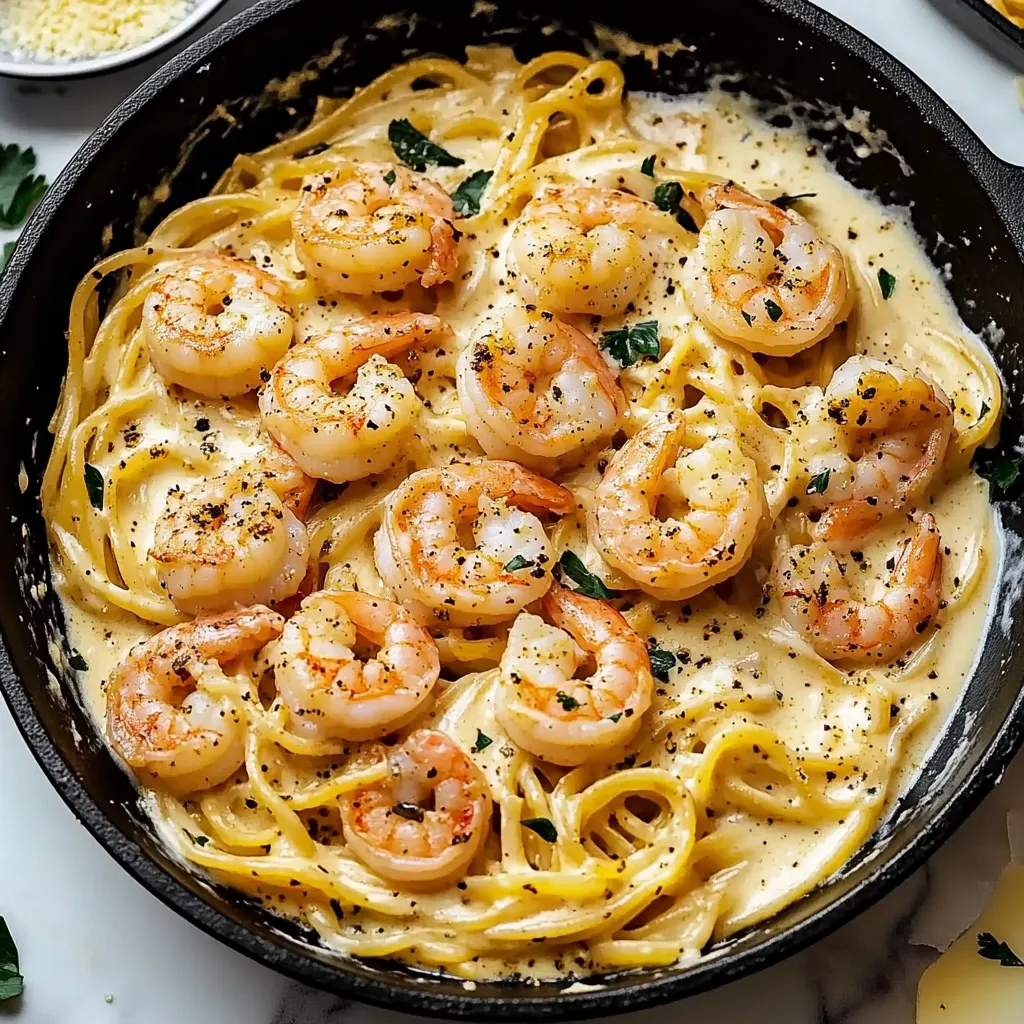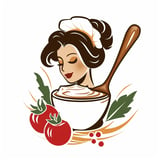 Bookmark
Bookmark
This creamy garlic shrimp pasta combines succulent seafood with a rich, velvety sauce that clings perfectly to al dente linguine. The dish strikes that elusive balance between impressive and effortless, making it perfect for both special occasions and weeknight dinners when you need something spectacular in under 30 minutes.
I first created this dish when trying to impress my husband on our anniversary without spending hours in the kitchen. It was such a hit that it's now our go to meal whenever we want something that feels special without the fuss.
Ingredients
- Linguine pasta provides the ideal texture to hold the creamy sauce. Look for bronze die cut pasta for the best sauce clinging ability
- Large raw shrimp deliver sweet seafood flavor. Always buy them deveined to save prep time
- Cajun or Old Bay seasoning creates complex flavor with just one ingredient. Fresh bottles have much more potent flavor
- Heavy cream forms the luxurious base of the sauce. Full fat version produces the richest results
- Parmesan cheese adds nutty depth and helps thicken the sauce naturally. Grate it fresh for best melting
- Garlic minced fresh provides aromatic punch that bottled versions simply cannot match
- Butter creates richness and helps carry flavors throughout the dish. European style butter has higher fat content for extra creaminess
Step-by-Step Instructions
- Perfectly Cook the Pasta
- Bring a large pot of water to a rolling boil before adding salt. Cook the linguine until just al dente usually 1 minute less than package directions. The pasta will continue cooking slightly when added to the sauce. Reserve some starchy pasta water before draining this secret ingredient helps bind the sauce to the pasta.
- Season and Sear the Shrimp
- Pat shrimp completely dry with paper towels first this ensures proper browning. Toss with olive oil and seasonings until evenly coated. Arrange shrimp in a single layer in a hot skillet they should sizzle on contact. Cook just until they turn pink and start to curl about 1 minute per side. Overcooked shrimp become rubbery so watch them carefully.
- Create the Silky Sauce
- Use the same skillet to capture all the flavorful bits left from cooking the shrimp. Sauté the garlic just until fragrant about 30 seconds careful not to brown it which creates bitterness. Add cream and simmer gently allowing it to reduce slightly and thicken. Whisk in cheese gradually while the sauce is warm but not boiling to prevent graininess.
- Combine Components
- Return pasta to the skillet tossing with tongs to coat every strand with sauce. The reserved pasta water helps loosen the sauce if needed. Add shrimp back to the pan at the very end just to warm through. The residual heat is enough to heat the shrimp without overcooking them.
 Bookmark
Bookmark
My favorite part of this recipe is the moment when the Parmesan melts into the cream creating that silky texture that professionally made pasta dishes have. I remember the first time I made this for my in laws they couldn't believe it wasn't from our favorite Italian restaurant. That moment of pride stays with me every time I prepare this dish.
Make Ahead and Storage
This pasta is best enjoyed immediately after cooking when the sauce is at its creamiest and the shrimp are perfectly tender. If you need to prepare components ahead, cook and season the shrimp up to one day in advance, storing them covered in the refrigerator. The sauce can be made a few hours ahead and gently rewarmed before adding the pasta. Leftovers will keep for up to two days, though the sauce may separate slightly when reheated. To revive leftover pasta, warm it gently in a skillet with a splash of cream.
Perfect Pairings
This creamy pasta calls for bright accompaniments to balance its richness. A simple arugula salad dressed with lemon juice and olive oil cuts through the cream beautifully. For wine lovers, reach for a crisp Pinot Grigio or unoaked Chardonnay whose acidity will complement without overwhelming the delicate shrimp flavor. A piece of crusty garlic bread is never unwelcome, perfect for soaking up any remaining sauce on your plate that's too good to leave behind.
Easy Substitutions
The beauty of this recipe lies in its adaptability. No shrimp? Substitute bite sized pieces of chicken breast or even scallops. For a vegetarian version, replace shrimp with sautéed mushrooms which provide wonderful umami flavor. Dairy free guests can enjoy this with full fat coconut milk instead of cream, though the flavor profile will shift slightly toward Thai cuisine. Half and half can replace heavy cream for a lighter version, though the sauce won't be quite as rich.
Recipe FAQs
- → Can I use frozen shrimp for this pasta dish?
Yes, frozen shrimp work well! Just make sure to completely thaw them first, then pat them dry with paper towels before seasoning. This prevents excess moisture that could make the dish watery and ensures proper browning when cooking.
- → What can I substitute for heavy cream?
For a lighter version, you can use half-and-half or a mixture of milk and cream cheese. For a dairy-free alternative, try full-fat coconut milk, which adds a subtle sweetness that complements the shrimp nicely.
- → How do I prevent the sauce from breaking or curdling?
Keep your heat at medium-low when adding the cream and cheese. Add the Parmesan gradually while stirring constantly, and make sure the cream isn't boiling when you add the cheese. The reserved pasta water also helps stabilize the sauce.
- → Can I add vegetables to this pasta dish?
Absolutely! Spinach, cherry tomatoes, peas, or asparagus make excellent additions. Add leafy greens at the end to wilt them, while firmer vegetables should be sautéed with the garlic before adding the cream.
- → What pasta shapes work best with this creamy sauce?
While linguine is suggested, any medium pasta shape that can hold sauce works well. Fettuccine, spaghetti, and penne are excellent alternatives. Ridged pasta like rigatoni or cavatappi will capture even more of the delicious sauce.
- → How do I know when the shrimp are perfectly cooked?
Shrimp cook very quickly and are done when they turn from translucent gray to opaque pink and form a C-shape. If they curl into a tight O-shape, they're overcooked. One minute per side is usually sufficient for large shrimp.
